How to grow chamomile – for lawns, containers and borders
Discover how to grow chamomile for beautiful blooms, culinary use and for a delicate, fragrant lawn
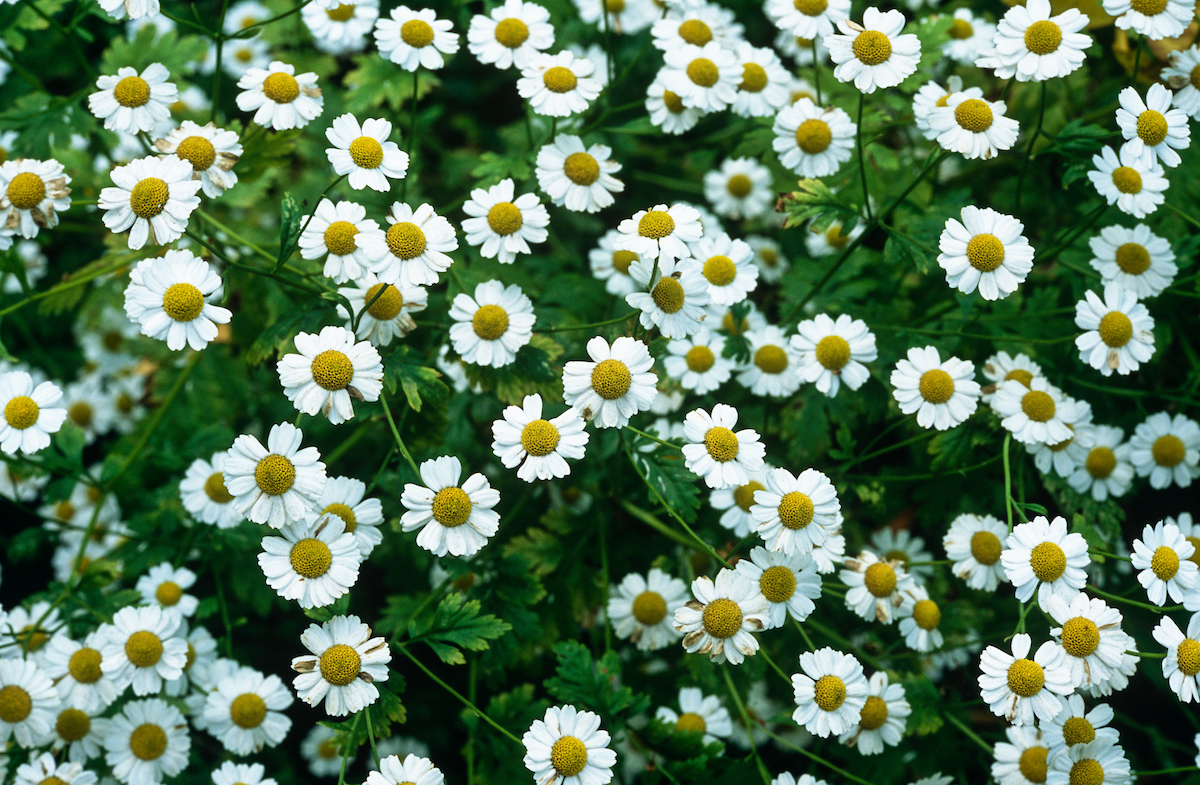

Knowing how to grow chamomile is a sure-fire way to fill your garden with daisy-like blooms from late spring to early autumn. These cheery white flowers with their bright yellow centers have been popular since the Middle Ages and not only attract valuable pollinators into the garden but have many medicinal and culinary uses too.
Perfect for growing in pots, as flower bed ideas at the front of borders, within gravel and wildflower gardens and even as a fragrant and feathery lawn, there are endless opportunities to bring these dainty beauties into your yard.
The two best known types are German (also referred to as Wild) chamomile – with it’s larger white blooms perched on 90cm high stems – and Roman (aka English or Garden) chamomile with it’s dark green creeping mat of leaves reaching just 30cm high and tiny delicate flowers. Both plants are highly scented and are high in antioxidants and essential oils.
Possessing calming and relaxing properties, chamomile has been used for treating hay fever, inflammation and stomach upsets. You can grow chamomile to harvest for soothing tinctures and teas. Sleep inducing, you only need a few fresh or dried flowerheads for a comforting brew.
Below, we tell you how to grow chamomile for success.
How to grow chamomile
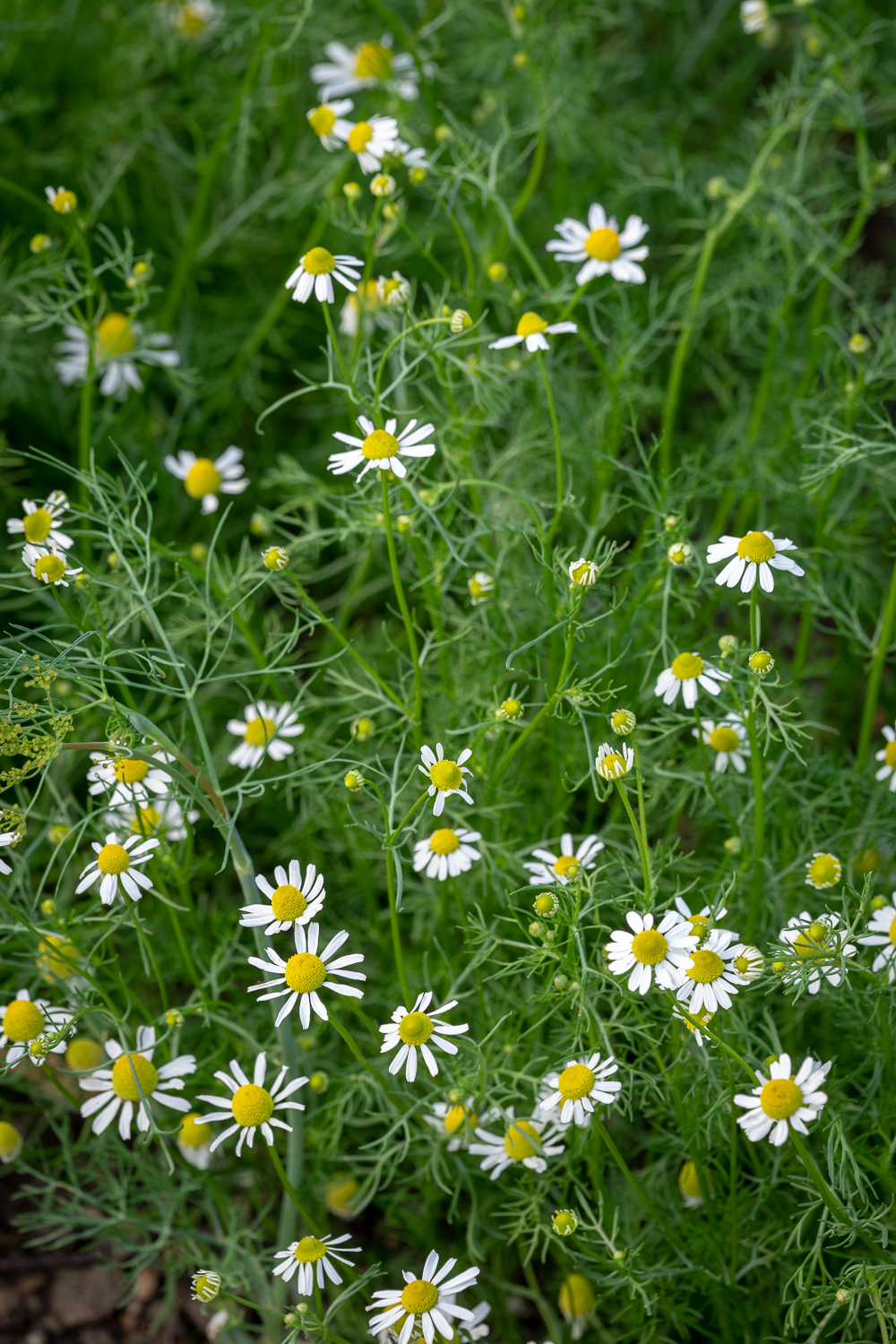
Roman chamomile (Chamaemelum nobile) is a perennial, so will happily grow back year after year while German chamomile (Matricaria recutita) is an annual, so will naturally die back after flowering, having set seed which will grow the following year.
Leading authority on herbs, Jekka McVicar says, ‘Roman chamomile has sweet smelling finely divided green leaves. The flowers can be used in infusions, but many find this form of chamomile bitter. Ideal for growing in meadows, or borders or wild areas.’ She also suggests ‘double flowered chamomile (Chamaemelum nobile 'Flore Pleno’, below) is good for lawns and for growing in containers. This form of chamomile also looks lovely grown as a seat.’
It’s worth knowing that named cultivars tend not to come true from seed, so it’s best to buy young plants from nurseries.
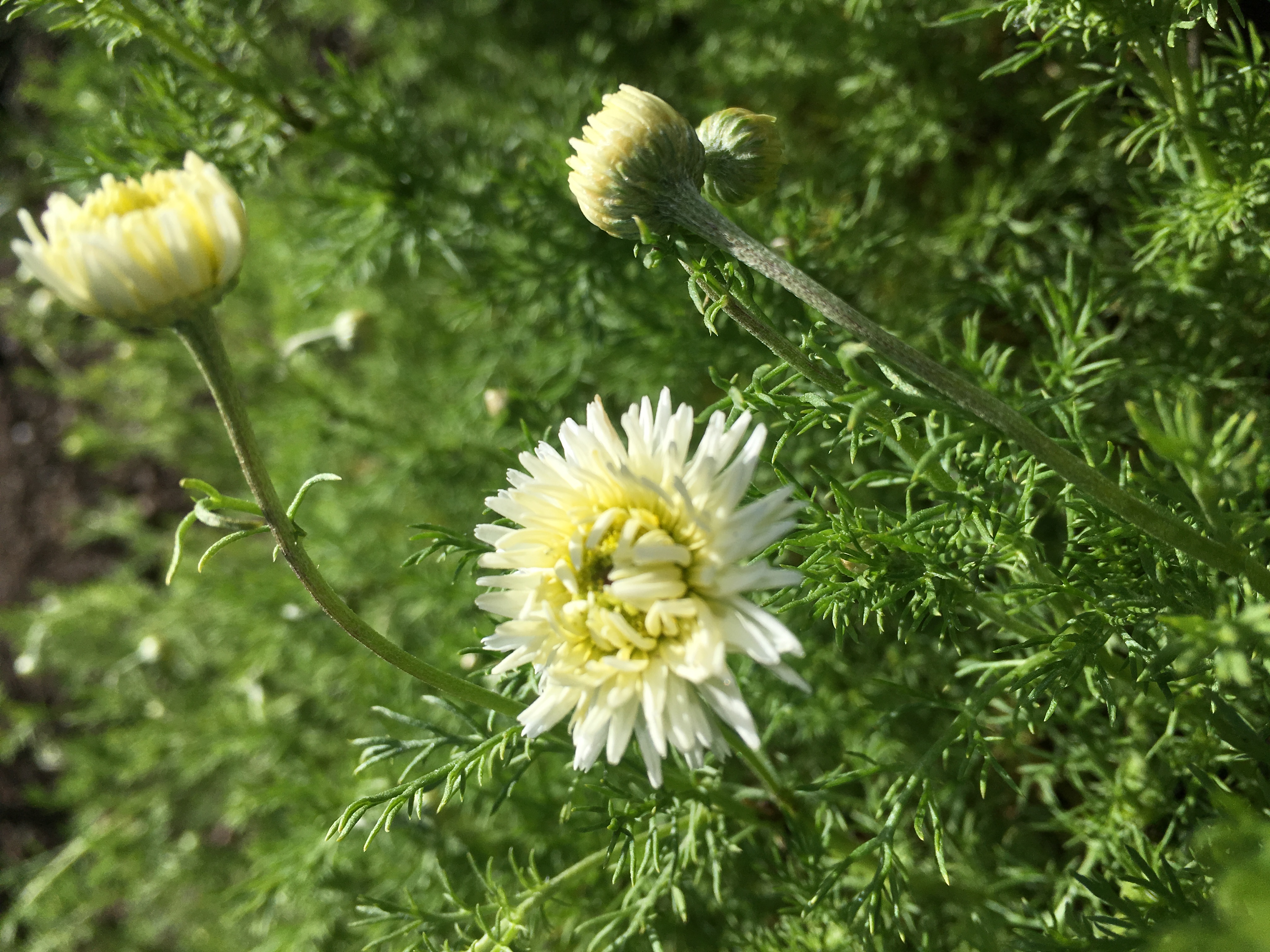
How to sow camomile seed
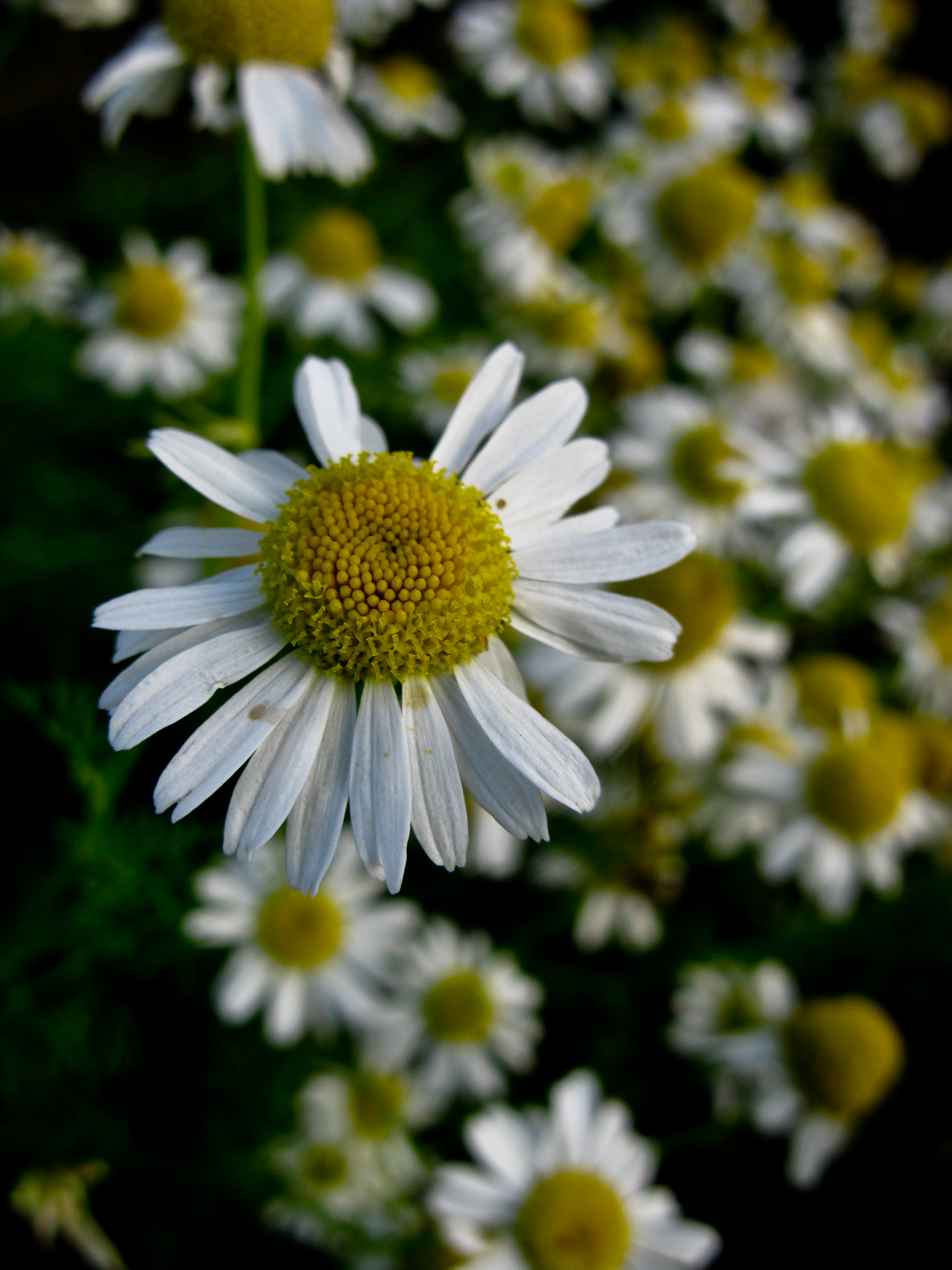
The best time to sow camomile seed is during February or March. Scatter seeds into pots of trays of moist seed compost, press gently into the surface and keep around 64-68F (18-20C). Heather Leedham, Director of Chiltern Seeds says, ‘germination should take only 7-14 days. Once seedlings are large enough to handle, plant out with 30cm spacing in all directions and water well. ’She also recommends to, ‘Weed in between seedlings and Chamomile will quickly fill the spaces.’
How to grow a chamomile lawn
Hugely popular during Tudor times, growing a chamomile lawn was a sign of prosperity and a sensory delight as treading gently on the green foliage would release a heady lemony fragrance. Today the most notable and treasured camomile lawns are at Buckingham Palace.
The choice plant for establishing a dense camomile lawn is non-flowering Chamaemelum nobile Treneague. Extremely low-growing – stretching up to just 2½-4in (6-10cm) high – this variety doesn’t grow true from seed so always buy young plants. Foliage remains lush and green even in hot weather and never needs mowing.
For a flowering chamomile lawn, the team at Morehavens Chamomile Nursery recommend Chamaemelum nobile dwarf. ‘It is slightly more vigorous and taller than "Treneague" and the stems are a little longer and thicker. It also releases an amazing, earthier aroma when trodden on.’ Perfect for partially shady spots or slightly alkaline soils.
Prior to planting, prepare the soil thoroughly, working in well-rotted compost and removing any weeds or stones. Spacing plants 4-8 inches (10-12cm) apart, be sure to dig a hole big enough to accommodate the plant’s rootball and deep enough so the leaves sit just above the ground. Push the soil back around the base of each plant, firming as you go and water well.
Where does chamomile grow best?
Best grown in a sunny, open position, once their roots are established these plants require very little attention.
While Roman chamomile prefers free draining and fairly fertile soils, the tougher and taller German chamomile is less fussy and will thrive in poor, heavy clay soils.
Both types are happy as container gardening ideas, as long as they have their preferred soil type and the pots are raised off the ground on pot feet to encourage water to drain through.
Does chamomile prefer sun or shade?
The best time to sow camomile seed is during February or March. Scatter seeds into pots of trays of moist seed compost, press gently into the surface and keep around 64-68F (18-20C). Heather Leedham, Director of Chiltern Seeds says, ‘germination should take only 7-14 days. Once seedlings are large enough to handle, plant out with 30cm spacing in all directions and water well. ’She also recommends to, ‘Weed in between seedlings and Chamomile will quickly fill the spaces.’
How to care for chamomile
Watering chamomile regularly is vital for strong and healthy growth. This is especially important with young plants and with German or Wild chamomile during periods of drought.
Clip or trim off any leggy growth to encourage the soft, fern-like foliage to form a dense and bushy mat. This will also promote stronger roots and the appearance of new shoots.
Harvesting flowerheads regularly and snipping off any that are past their best, will encourage a succession of fresh, new blooms.'
Harvesting chamomile
Fresh or dried chamomile flowers can be used to make tea, in baking or homemade beauty products. Avoid using the leaves and stems as these are particularly bitter.
Harvesting is best done early in the morning, when the flowers are newly opened. Snip the flowerheads off at the very top of the stem and spread out to dry somewhere warm and well ventilated but out of direct sunlight. Once totally dry store in an airtight container in a cool, dry place for up to a year.
Dried blooms have a much more concentrated scent and flavour than fresh ones, so do use sparingly. A teaspoon of dried flowers will provide the same potency as a couple of teaspoons of fresh flowers. Crushing the dried flowers will help intensify the flavour further.
Sign up to the Homes & Gardens newsletter
Design expertise in your inbox – from inspiring decorating ideas and beautiful celebrity homes to practical gardening advice and shopping round-ups.

Journalist Jill Morgan has spent over 20 years writing and editing gardening, interior and property features. Titles she has worked on include The English Home, House Beautiful, Ideal Home, Houzz and Modern Gardens and she writes regularly for H&G as a Contributing Editor. Whilst she is a dab hand at renovation projects and DIY, she is happiest when out digging in the garden or planning a new border.
-
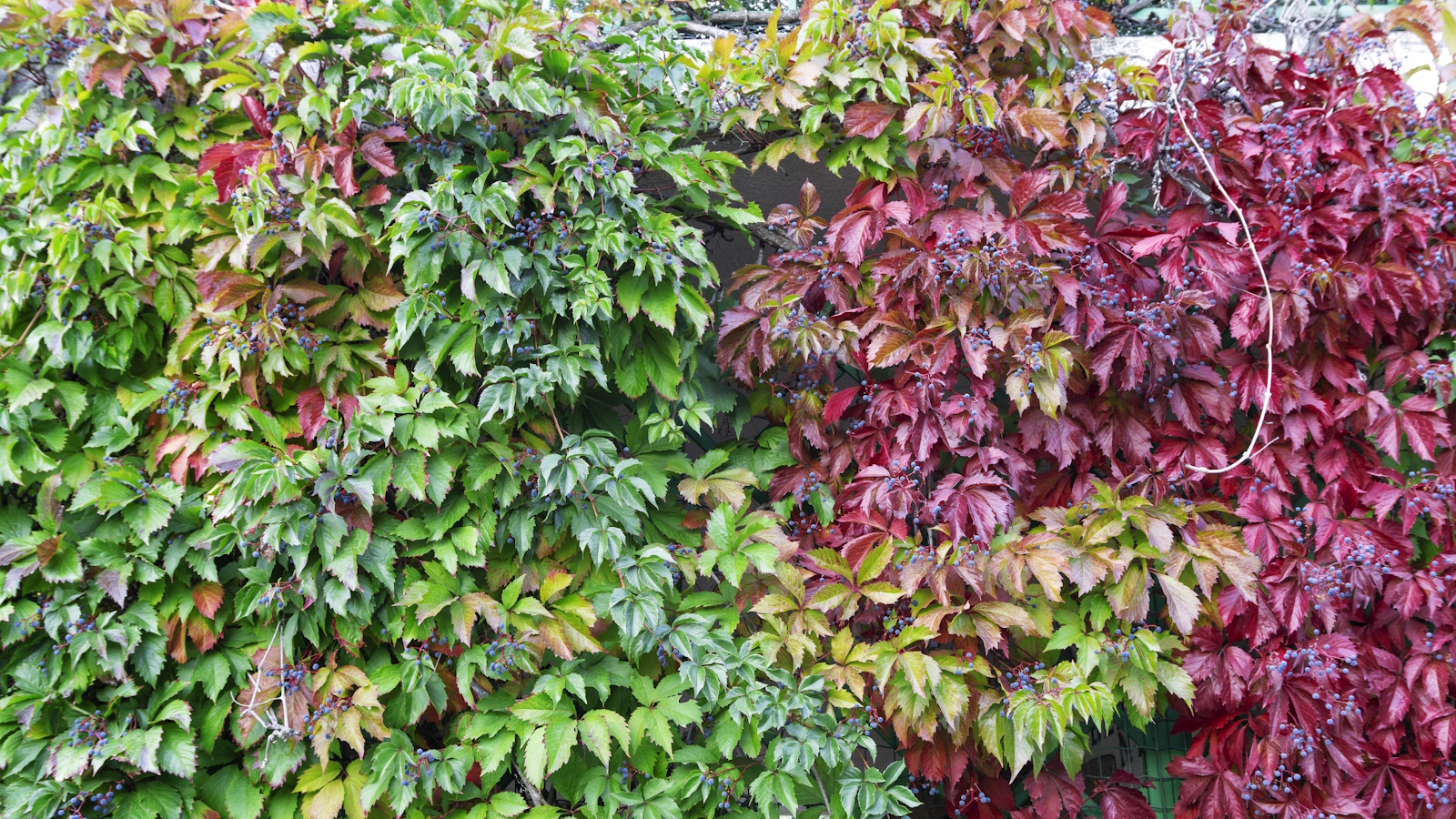 How to grow Virginia creeper – it may divide opinion, but this fast-growing, shade-tolerant vine will cover walls and fences in record time
How to grow Virginia creeper – it may divide opinion, but this fast-growing, shade-tolerant vine will cover walls and fences in record timeIf you are looking for spectacular fall color, Virginia creeper is the climbing plant to grow
By Thomas Rutter
-
 Step up your pool cleaning routine with Beatbot AquaSense 2 Ultra
Step up your pool cleaning routine with Beatbot AquaSense 2 UltraCelebrate National Pool Opening Day by saving up to $618 on a luxurious pool cleaning solution from Beatbot.
By Sponsored